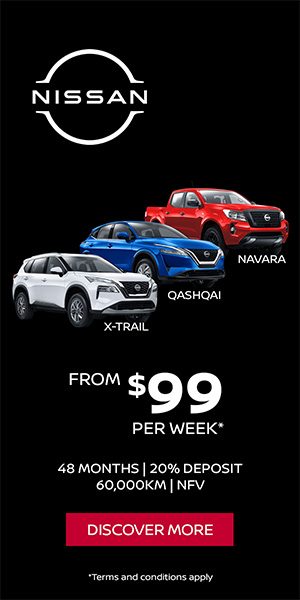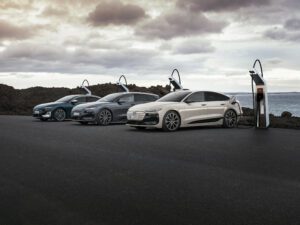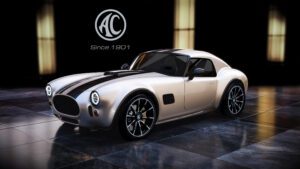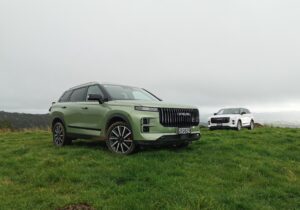The Volkswagen Transporter has celebrated its 70th birthday, marking the platinum anniversary of its public debut in the UK.
The Transporter – also known as Bulli, Kombi, VW bus or microbus – was first launched to the world at the Commercial Motor Show at Earl’s Court, London in 1954, and since then more than 13 million have been sold. For six generations, globetrotters have travelled the world in it, businesses have relied on it and families have driven it every single day.
Now 70 years on and the Transporter’s enduring popularity continues, from 786 UK sales in 1954, to 17,521 in 2023. The future is bright for the icon, with the latest iteration, T6.1, launched in 2019, showcasing a new dashboard, greater connectivity and a facelift with updated headlights and grille.
To celebrate the landmark, Volkswagen Commercial Vehicles has collated the ultimate guide to the historic vehicle.
T1: 1950 to 1967
Revealed as a hand-built panel van prototype in 1949, the T1 eventually launched as a rear-engine panel van, passenger van and eight-seat vehicle. The engine and gearbox came from the Volkswagen Beetle and it offered a maximum payload of 750kg. In 1951, the iconic “Samba” model was revealed with all-round windows and folding sunroof, and a year later a pick-up version was unveiled. Production moved from Wolfsburg to Hanover in 1956, with some models built in Brazil. By 1967, around 1.9 million people had purchased the T1 with its “splittie” windscreen, making it a global success.
T2: 1967 to 1979
With the T1 forging its name as something of a cultural icon during the swinging sixties era, the successor had a lot to live up to. The T2 took the design and utility of the van forward with a new front end and air intake grille. A sliding door was now standard, and the pop-up roof camper version became an instant hit with globetrotters. In 1972, the T2 went electric with a zero-emission version available to buy. During its run, 2.14 million vehicles were built at the Hanover plant. Production continued until 2013 at the Volkswagen plant in Sao Paulo.
T3: 1979 to 1992
The T3 took the famous vehicle into the modern era with a wider body offering, more passenger and cargo space and improved safety. A flat engine, available in diesel, was introduced adding to the spaciousness while a new chassis offered car-like handling. In 1985, a raft of innovations were added: catalytic converters, turbochargers and all-wheel drive, while the California and Caravelle became popular. In total, 1.3 million T3s were made in Hanover.
T4: 1990 to 2003
This generation marked a technical revolution with Volkswagen Commercial Vehicles making the T4 front-engine and front-wheel drive for the first time. With this came a new design, longer front end, new suspension, more varied engine choice and even better handling. The Transporter was also available in two wheelbases for the first time. Following a 1996 mid-model refresh, the T4 was phased out in 2003 having sold 1.9 million models across the range, which had grown to feature the panel van, kombi, double cab, pickup and chassis with single and double cab, Caravelle, Multivan and California.
T5: 2003 to 2015
The T5 was an evolution of exterior design with greater focus placed on the interior and the driver’s workplace as well as a variety of petrol and diesel engines and an all-wheel drive system. The California was built in Hanover for the first time, while Caravelle and Multivan continued to be popular choices alongside a number of limited-edition models. In total, 1.65 million T5s were produced.
T6 / T6.1: 2015 to 2019 / 2019 to present
New engines, intelligent driver assistance systems, new infotainment and a front-end redesign have defined the modern T6 era – while the two-tone paint scheme serves as a nod to the original model. In 2019, Volkswagen Commercial Vehicles brought the iconic van into the digital age with a new dashboard design, a raft of technology and connectivity updates as well as a new power steering system and additional efficient, clean turbodiesels.
The New Transporter: Available in 2025
The new Transporter will be unveiled at the IAA in Munich later this year, and available to the market in early 2025. The newest iteration of this iconic vehicle will have a significantly longer and wider load compartment, with a digital cockpit landscape as standard to meet all the requirements of today’s working world in the commercial vehicle.
The British connection
Decades before the Transporter took off in the UK, a senior British army officer, Major Ivan Hirst was placed in charge of redelivering the Volkswagen factory, post-war. He brought the idea of introducing a load-carrying vehicle inspired by the classic Beetle platform. This extended onto the creation of a flat-bed truck – dubbed the Plattenwagen – to move parts around the factory. In the mid-1940s, Ben Pon, a Dutch importer, gravitated towards the truck which led to the proposed idea of a more developed panel van version.










